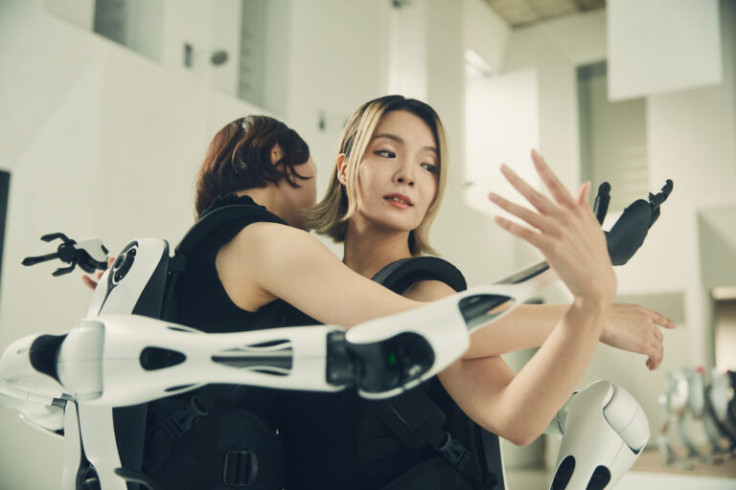Scientists Create Robotic Arms That Can Be Used For Physical Tasks And 'Liberating The Mind'

KEY POINTS
- Jizai Arms were initially developed as a device to help dancers 'enhance' their expressiveness
- The device has great potential in assisting in human tasks, acquiring new physical skills and more
- Further exploration is needed to understand the impacts of such devices on the human mind
If you have ever wondered what the world would look like if humans and machines lived in a "state of unity," a group of scientists is offering a snapshot of such a world through their innovative robotic arms.
Masahiko Inami, a professor at the University of Tokyo, is leading a team of researchers in developing Jizai Arms — a set of robotic arms that can be worn and removed much like a backpack.
Through research, Inami's team is going beyond automation and wants to explore what a symbiotic relationship between humans and machines would look like.
"Jizai Arms is a product of the JST ERATO Inami JIZAI Body Project, funded by the Japanese government's science and technology budget," Inami told International Business Times. "With the current advancements in robotics and AI technology, various technologies are being automated. However, our research has aimed not to automate everything, but to achieve a state of unity between humans and machines."
The team's idea of humans donning AI and robotics is akin to the concept of unity between a "rider and horse," Inami said.
"The keyword in this context is 'JIZAI.' JIZAI is a concept in Hinduism (īśvara) and Buddhism(自在), signifying the ability to act freely without being constrained by physical or locational limitations," he added.
Inami explained that Jizai Arms, currently in the experimental stage, were initially developed as a device to help dancers "enhance" their expressiveness and use it as a tool for creativity.
"In addition to their hands and feet, dancers can now acquire new physical expressions using Jizai Arms," Inami said about the device. "Furthermore, dancers have been observed to gain new dance expressions through the movements of Jizai Arms, which in turn perform new actions based on these expressions. This phenomenon, akin to an impromptu jazz session occurring within the body, has been observed to accelerate the dancer's creativity."
If the team's vision comes true, the Jizai Arms would be used not only to help humans with their everyday tasks but also for creative expression and the enhancement of physical abilities.
"We hope that the technology we have developed will not only assist human tasks but also contribute to rehabilitation support, facilitate the acquisition of new physical skills, and expand new artistic expressions," Inami said.
One aspect that needs further exploration is the effect of such wearable devices on the human mind. Behavioral and psychological changes could be observed as human beings become increasingly dependent on technology and wearable devices.
"Through our series of studies, we have found that augmenting the body has a significant impact on the mind," Inami noted. "Phenomena such as increased motivation and a more positive outlook towards the future have been observed when new skills can be acquired, even with an augmented body. We believe this technology can be used not only for physical augmentation but also for liberating the mind."
Inami acknowledged that this technology could "potentially be misused." Hence, his team intends to monitor any negative side effects as they continue their research and development.
© Copyright IBTimes 2025. All rights reserved.





















